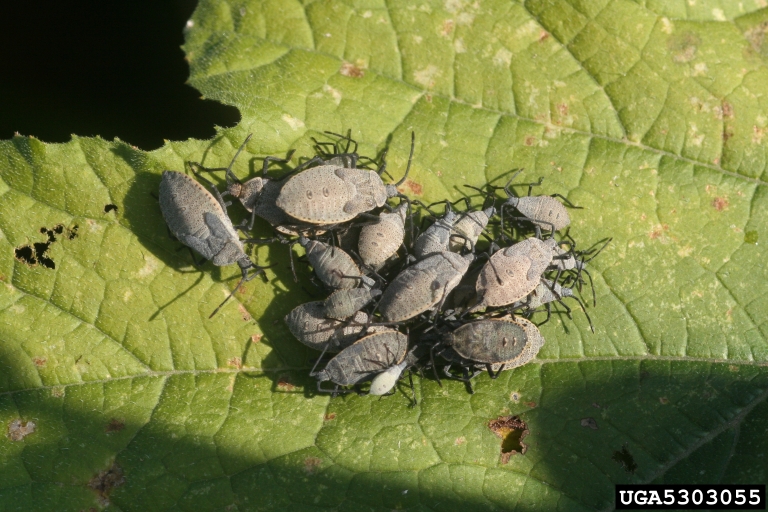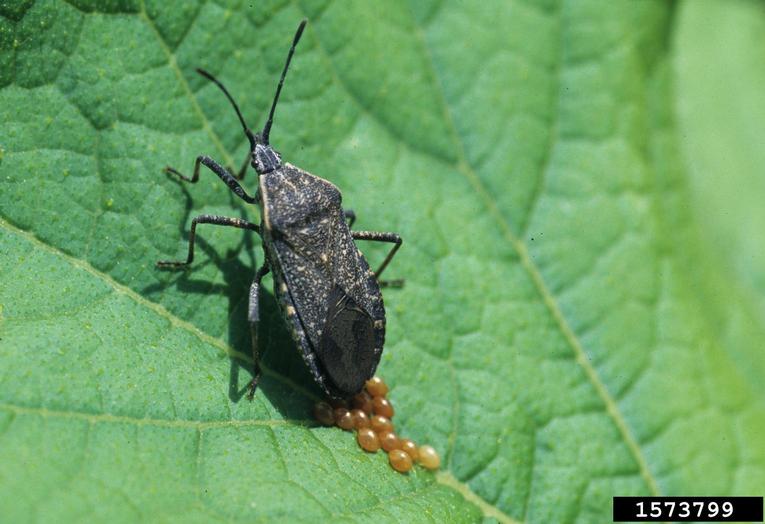How to Spot and Control Squash Bugs in Your Garden
go.ncsu.edu/readext?1079054
en Español / em Português
El inglés es el idioma de control de esta página. En la medida en que haya algún conflicto entre la traducción al inglés y la traducción, el inglés prevalece.
Al hacer clic en el enlace de traducción se activa un servicio de traducción gratuito para convertir la página al español. Al igual que con cualquier traducción por Internet, la conversión no es sensible al contexto y puede que no traduzca el texto en su significado original. NC State Extension no garantiza la exactitud del texto traducido. Por favor, tenga en cuenta que algunas aplicaciones y/o servicios pueden no funcionar como se espera cuando se traducen.
Português
Inglês é o idioma de controle desta página. Na medida que haja algum conflito entre o texto original em Inglês e a tradução, o Inglês prevalece.
Ao clicar no link de tradução, um serviço gratuito de tradução será ativado para converter a página para o Português. Como em qualquer tradução pela internet, a conversão não é sensivel ao contexto e pode não ocorrer a tradução para o significado orginal. O serviço de Extensão da Carolina do Norte (NC State Extension) não garante a exatidão do texto traduzido. Por favor, observe que algumas funções ou serviços podem não funcionar como esperado após a tradução.
English
English is the controlling language of this page. To the extent there is any conflict between the English text and the translation, English controls.
Clicking on the translation link activates a free translation service to convert the page to Spanish. As with any Internet translation, the conversion is not context-sensitive and may not translate the text to its original meaning. NC State Extension does not guarantee the accuracy of the translated text. Please note that some applications and/or services may not function as expected when translated.
Collapse ▲(Adapted from an article originally written by Jessica Strickland Wayne CES)
A Common Pest for a Popular Crop
Squash is a popular summer vegetable we often try to grow in our gardens. However, one challenge when growing squash is having to deal with a common pest called squash bugs. This insect can be a serious problem, not only on squash, but also on zucchini and pumpkin plants.
Understanding the Squash Bug Life Cycle
The life cycle of the squash bug begins with the adult insects overwintering in protected areas under plant debris, and then emerge in the spring. When they emerge, they seek out squash plants to feed on.
Identifying Eggs, Nymphs, and Adult Squash Bugs
The females will lay clusters of about 20 bronze/copper-colored eggs on the underside of leaves, commonly where two leaf veins meet to form a V, or on the stems. The eggs hatch in 1-2 weeks, typically from mid-May to mid-June.

Newly hatched squash bug nymphs feed in groups and can quickly cause damage—handpick or control them while they’re young.
The newly hatched nymphs will have a black head and legs with light green bodies. As they grow, they turn light gray as they become adults. Adult squash bugs are brownish-black and about 5/8” long. It takes about 5 weeks for the squash bugs to complete their life cycle from egg to adult.
How Squash Bugs Damage Your Plants
Squash bugs have straw-like or piercing-sucking mouthparts that they use to pierce the plant and suck the sap out, similar to how we would drink from a juice box. The symptoms that show up on squash plants will be yellow spots on the leaves where they have fed. The leaves will eventually turn brown and die. A squash bug’s damage will also disrupt the flow of water and nutrients to leaves causing the leaves to wilt. Squash bug feeding can reduce yields and eventually lead to plant death.
Control Strategies for Squash Bugs
There are several strategies listed below for controlling squash bugs:
Garden Clean-Up and Prevention
- Since squash bugs overwinter on plant debris, it is important to do a good clean up in the fall by removing all plant debris.
- Squash bugs can also hide out in mulch, so removing mulch may also be necessary where populations are increasing.
- It is important to keep plants healthy and avoid stresses like lack of water, close spacing, etc. to help the squash plants to be more tolerable of insect damage.
- Control of early nymphal stages is more effective, as mature squash bugs can be difficult to control.
Manual Removal Tactics
- Frequent scouting and handpicking are effective, especially when you have only a few squash plants to care for.
- Squash bugs can simply be knocked off into a bucket of soapy water.
- Look for copper colored egg masses on underside of leaves and crush them or tear off that part of the leaf to reduce squash bug populations.
- Do note that squash bugs are “shy”. They will run quickly for cover when disturbed so you will have to hunt for them on the underside of leaves within large plants. Since they are “shy” you can set a trap for them. Place boards, pieces of newspaper, or cardboard out in the garden near plants. Squash bugs will congregate under them at night and then come morning, you can dispose of them.

Female squash bugs lay clusters of bronze-colored eggs near leaf veins—check leaves closely to catch them early.
Early Planting and Physical Barriers
- Early season planting will allow you to harvest squash before squash bug populations begin to increase.
- Use row covers on young plants to create a barrier to prevent squash bugs from reaching plants.
Chemical Control Options
- Insecticides containing the active ingredients Permethrin, Bifenthrin, Imidacloprid, Malathion should provide effective control. Remember to apply insecticides in the early morning or late evening when pollinating insects are less active.
Stay Ahead of the Squash Bug Problem
Squash bugs are a common challenge when growing squash in our gardens. Understanding the life cycle and possible control strategies can help keep them away until one can benefit from harvesting some squash from the garden. For more information on controlling squash bugs and other garden pests, please contact Daniel Simpson at 252-745-4121 or Daniel_Simpson@ncsu.edu.



